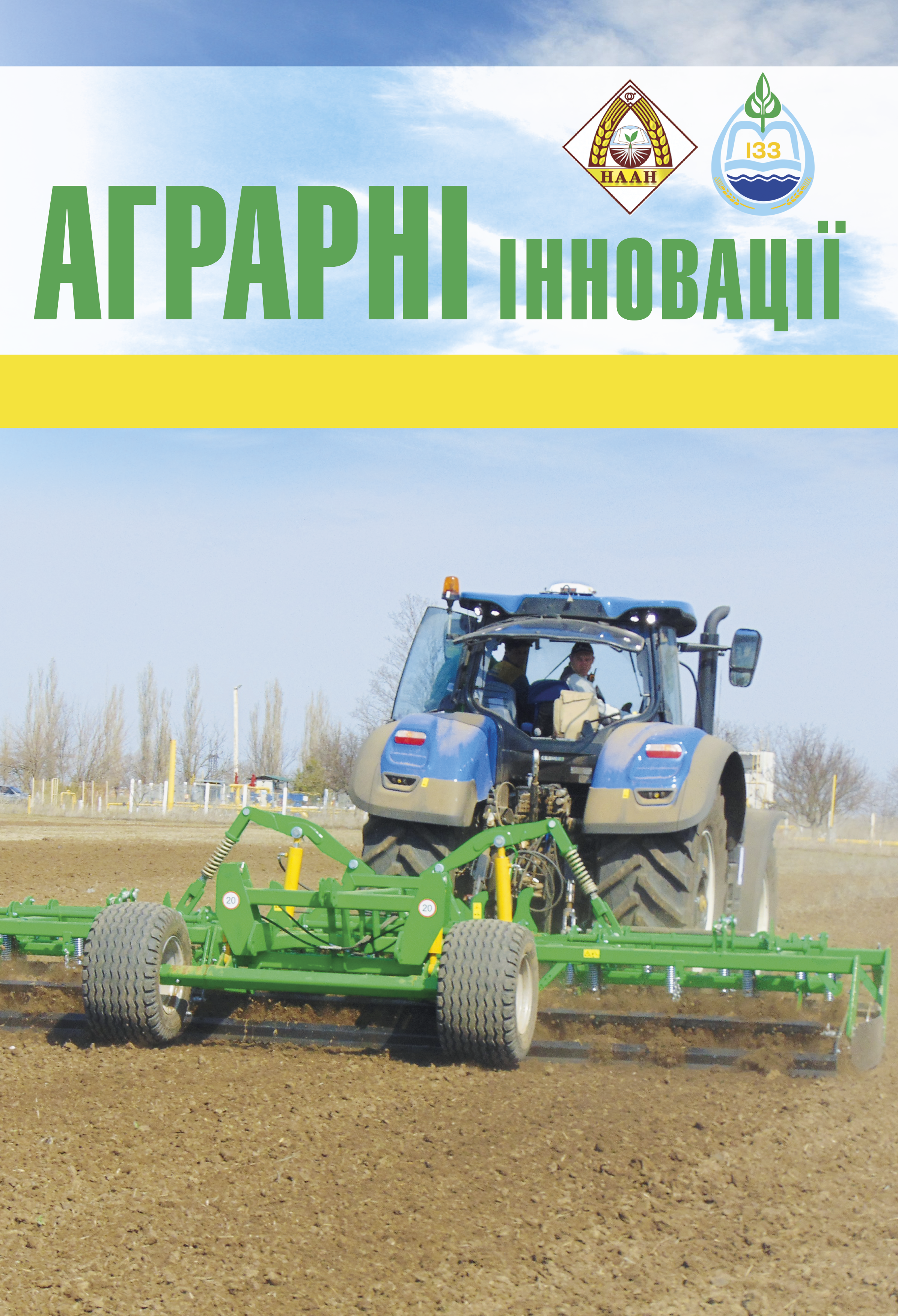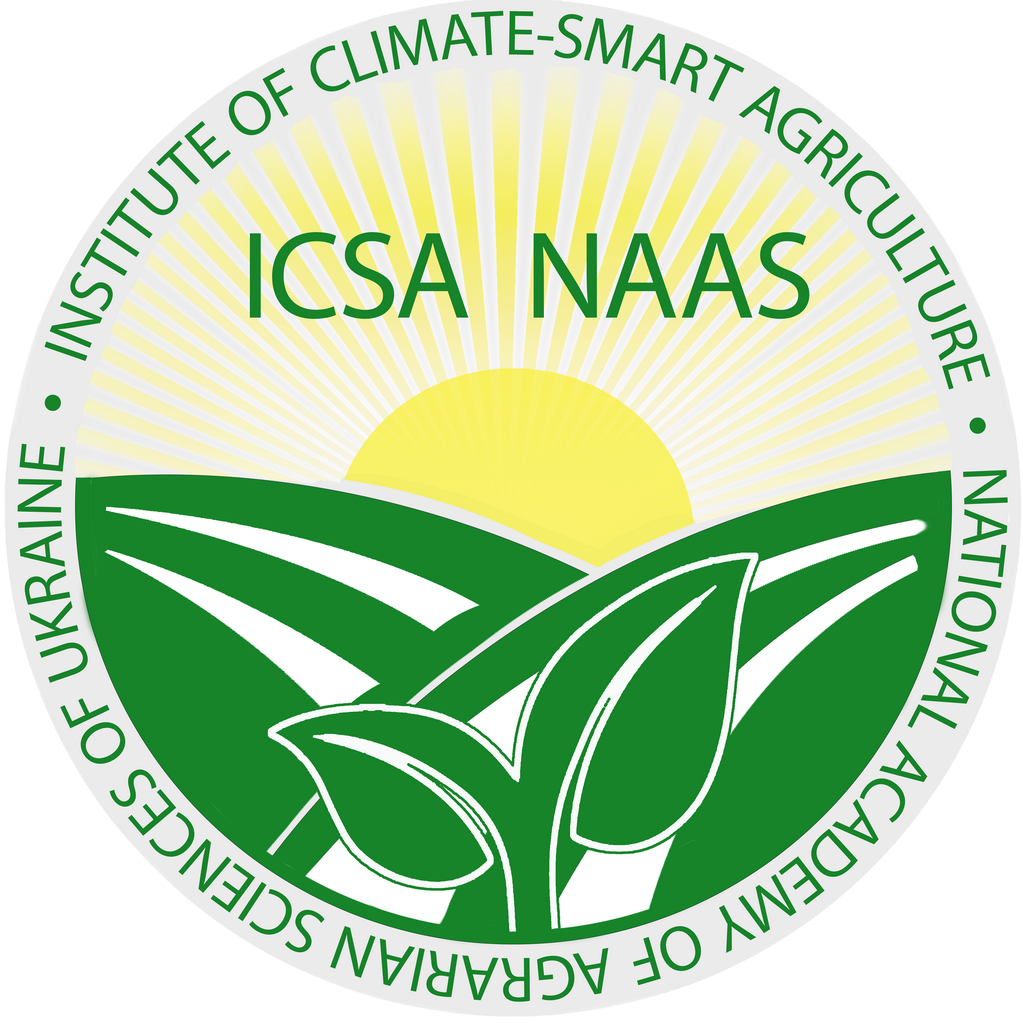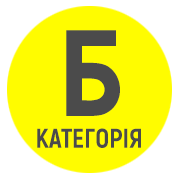Phytopathological condition of soil and development of soybean diseases depending on cultivation technology in the conditions of the Northern Steppe of Ukraine
Abstract
Purpose. To investigate the influence of soybean cultivationtechnology on the phytopathological condition of soiland the development of crop diseases in the conditions of the Northern Steppe of Ukraine. Methods. Field and laboratorystudies were carried out in accordance with modernrequirements and standards of research in agronomyand agriculture. Results. Growing soybeans using no-tilltechnology, leaving plant residues on the soil surface, contributedto the change in environmental conditions for theformation and development of microorganisms in the soilthroughout the years of research.According to the results of the phytopathological analysisof soil samples, on average over the years of research,the total number of fungi was from 79.5 to 94.4 thousandCFU/g of soil. The increase in the number of all groupsof microorganisms in the soil contributed to significantnatural biological control of the number and manifestationof soybean disease pathogens. Most soybean plants,regardless of the experiment variant, were affected bythe fungi Alternaria alternata, Peronospora manshuricaand Fusarium oxysporum. On average over the years ofresearch and by cultivation technology variants, plants ofthe Fortetsya variety were slightly more affected by thepathogens of Alternaria and Peronosporosis – the intensityof disease development in the flowering phase – thebeginning of bean formation was higher compared to theBetina variety by 15.6 and 5.4 percentage points, respectively.At the same time, the Fortetsya variety was somewhatmore resistant to the pathogen of fusarium wilt ofplants – the intensity of disease development was lowercompared to the Betina variety by 5.3 percentage points.The same trend was observed during the period of seedripening. Regarding the soybean growing technologyoption, it should be noted that the better conditions forplant growth and development that have developed overall years of research using no-till technology have contributedto the manifestation of greater plant resistance to diseasepathogens.Conclusions. On average over the years of research,the total number of fungi in soil samples of experimentalplots was from 79.5 to 94.4 thousand CFU/g of soil, with theadvantage of the no-till technology option. On average overthe years of research, the proportion of pathogenic fungi insoil samples under this cultivation technology was 7.8 thousandCFU/g of soil, which is 66.4% less than the indicatorsof the classical soybean cultivation technology option. Thestudies determined that the increase in the number of allgroups of microorganisms in the soil contributed to a significantnatural biological control of the number and manifestationof soybean disease pathogens. On average over theyears of research and by variety factor, the intensity of plantdamage by Alternaria alternata, Peronospora manshuricaand Fusarium oxysporum fungi was lower, depending onthe phase of plant growth and development, by 1.7-20.6;8.0-12.1 and 29.9-36.6 percentage points, respectively,compared to classical technology.
References
2. Каленська С. М., Новицька Н. В. Ефективність нанопрепаратів у технології вирощування сої. Plant and Soil Science. 2020. 11(3). С. 7–21. https://doi.org/10.31548/agr2020.03.007
3. Чоні С. Фітосанітарний стан ґрунту: що змінилося за останні роки. AgroTimes. 2021. https://agrotimes.ua/article/fitosanitarnyj-stan-gruntu/
4. Заболотня А. Аналіз інфекції насіння сої культурної : матеріали VІІ Міжнар. наук. конф. студентів, аспірантів та молодих вчених «Актуальні питання розвитку біології та екології» (16–17 листопада 2022 р., м. Вінниця). Вінниця: ТВОРИ. 2022. С. 34-35.
5. Невмержицька О. М., Плотницька Н. М., Гурманчук О. В. Оцінка ефективності фунгіцидів у системі захисту сої. Таврійський науковий вісник. 2023. № 133. С. 70–77. https://doi.org/10.32782/2226-0099.2023.133.10
6. Щербачук В. М. Формування урожайності та якісних показників зерна сої залежно від системи захисту посівів проти бур’янів та хвороб в умовах достатнього зволоження. Агробіологія. 2015. №. 1. С. 88–91.
7. Поспєлова Г. Д., Чайка Т. О., Степаненко Р. О. Дослідження патогенної мікрофлори насіння сої. Енергоефективність і енергонезалежність сільських територій: передумови формування та функціонування : колективна монографія; за ред. Т. О. Чайки, І. О. Яснолоб, О. О. Горба. Полтава : Астрая, 2020. С. 176–182.
8. Fleurat-Lessard F. Integrated management of the risks of stored grain spoilage by seedborne fungi and contamination by storage mould mycotoxins–An update. Journal of Stored Products Research. 2017. Т. 71. С. 22–40.
9. Broders K. D., Lipps P. E., Paul P. A., Dorrance A. E. Evaluation of Fusarium graminearum Associated with Corn and Soybean Seed and Seedling Disease in Ohio. Plant Disease. 2007. 91(9). 1155–1160. https://doi.org/10.1094/pdis-91-9-1155
10. Pospielova G., Kovalenko N., Nechiporenko N., Kocherga V., Grechkosiy A., Skliar S. Fungicidal protection of soy crops against root rot. Scientific Progress & Innovations. 2023. 26 (3). 5–10. https://doi.org/10.31210/spi2023.26.03.01
11. Невмержицька О. М., Плотницька Н. М., Гурманчук О. В., Сколуб С. М. Ефективність застосування ґрунтових гербіцидів у посівах сої. Таврійський науковий вісник. 2019. № 109. Ч. 1. С. 90–94.
12. Ananda Y. Bandara, Dilooshi K. Weerasooriya, Carl A. Bradley, Tom W. Allen, Paul D. Eske. Dissecting the economic impact of soybean diseases in the United States over two decades. Journal.pone. 0231141. Published: April 2, 2020. https://doi.org/10.1101/655837
13. Roth M. G., Webster R. W., Mueller D. S. Integrated Management of Important Soybean Pathogens of the United States in Changing Climate. Journal of Integrated Pest Management. 2020. 11(1). 17. https://doi. org/10.1093/jipm/pmaa013/
14. Курдиш І. К. Перспектива застосування мікробів-антогоністів у захисті агроекосистем від патогенів. Сільськогосподарська мікробіологія. 2011. Вип. 13. С. 23–40.
15. Pospielova G., Kovalenko N., Nechiporenko N., Sherstiuk O., Morozov O. Influence of pre-seed treatment on sowing qualities and phytosanitary condition of nuttle seeds. Bulletin of Poltava State Agrarian Academy. 2022. 2. 127–134. https://doi. org/10.31210/visnyk2022.02.15.
16. Pospielova G. D., Kovalenko N. P., Nechiporenko N. I., Stepanenko R. O., Sherstiuk O. L. Influence of fungicidal disinfectants on pathogenic complex and laboratory germination of soybean seeds. Bulletin of Poltava State Agrarian Academy. 2021. 1. 72–79. https://doi.org/10.31210/visnyk2021.01.08






